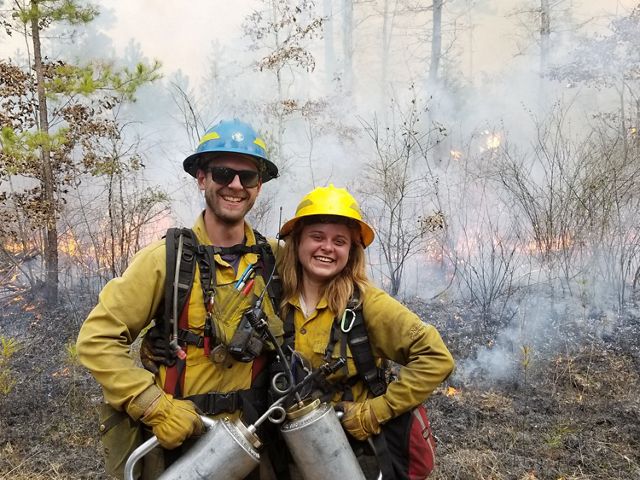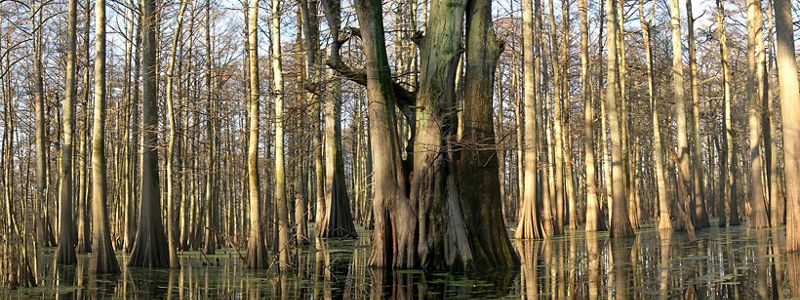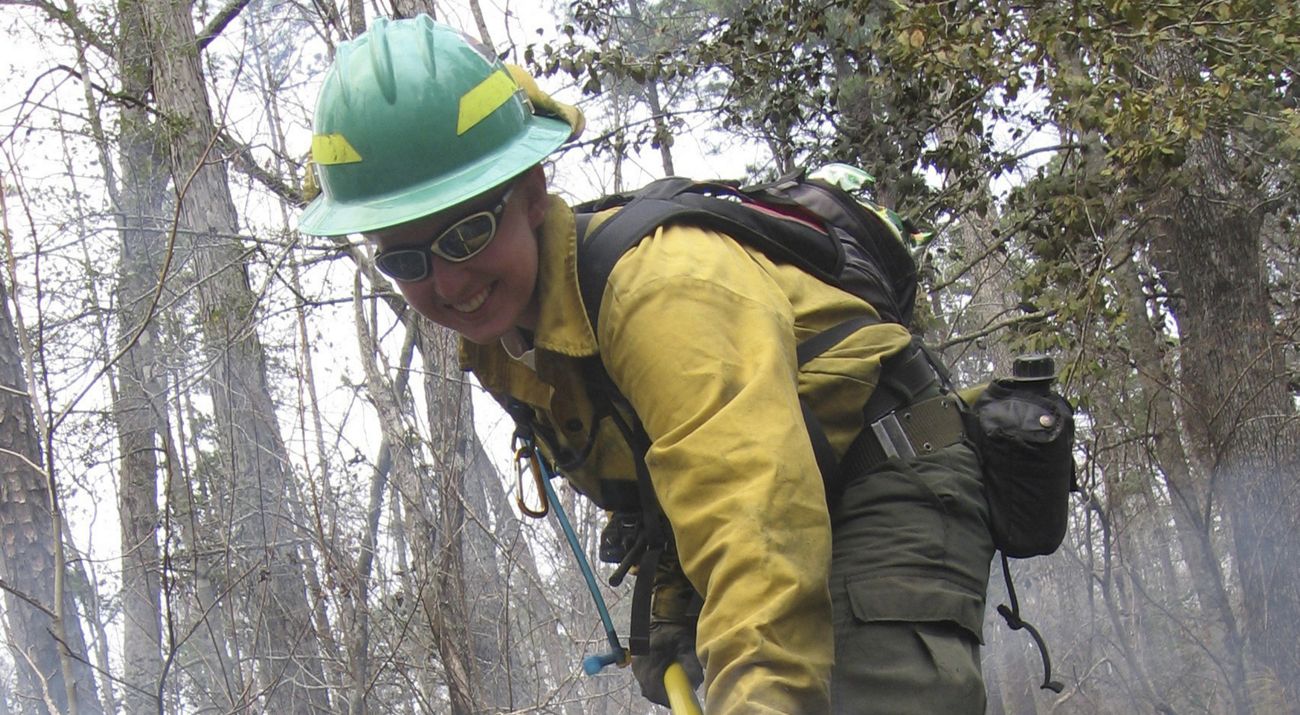Arkansas forests are breathtaking, with sprawling oak trees, abundant wildlife and a rich history of natural beauty. But beneath the canopy lies a growing problem: overcrowded and unhealthy forests that are more vulnerable to pests, disease, and devastating wildfires. The solution? Fire.
Controlled burns, also known as prescribed fires, are helping to reverse decades of fire suppression policies that have disrupted the natural balance of these ecosystems. By intentionally reintroducing fire, conservationists are restoring the health and resilience of Arkansas’ forests, making them a haven for wildlife and a model for sustainable land management.
The History of Fire in Forest Management
As settlers moved west in the late 1800s and early 1900s, they reported riding their wagons through beautiful, open forests with abundant grass for their cattle. Forest fires, ignited by lightning and Native peoples, kept the forests healthy. The forests of the Interior Highlands, stretching across Missouri, Oklahoma and Arkansas were all but gone as new farms and towns were established and intense slash-fueled wildfire swept the remaining cutover forested areas.
“It wasn’t until the early part of the 20th century, people took notice of the destruction,” says McRee Anderson, Fire Restoration Program Director for The Nature Conservancy in Arkansas. “In an attempt to protect and restore the remaining forested lands, trees were allowed to grow, with most fires suppressed to save the trees.”
What resulted, McRee says, were weak forests thick with trees. “Contrary to what many people think of a forest, a high density of trees does not produce a healthy forest.”
Overcrowded, unhealthy forests increase risks for intense, uncontrollable wildfires that can threaten communities, even in urban areas. This is where good fire comes into play reducing unhealthy trees and brush, and opening up forests as they historically looked, before settlers arrived.


Collaborative Efforts to Revitalize Arkansas Forests
Controlled burns by TNC and partner fire crews over the last 25 years allow for a resurgence of native plants and habitat for wildlife.
With the assistance of partners, including the Arkansas Game & Fish Commission and the U.S. Forest Service, TNC utilizes good fire to restore wooded habitats to enhance the diversity and quality of Arkansas’ forest’s habitats. Since the early 1990’s, one million acres of wooded habitat has been restored and another 400,000 are improving with the implementation of prescribed fire and forest management practices to restore high quality forests.
“Partnerships are vital to our success to care for one of the most biodiverse areas in North America,” McRee says.
Across 96 plots in Big Piney Ranger District's Woodland Ecosystem Restoration Project, researchers evaluate the impact of controlled burns on various forest elements, including tree, shrubs, soil and ground cover. Results showed a 40% increase in ground plant species, and 11% improvement in plant coverage and 75% reduction in shrubs per acre, which helps create space for diverse plant growth.
“Our goal is to restore good fire to 500,000 acres annually in the Interior Highlands,” McRee says.


A Global Classroom: Training Fire Management to Conservationists from Around the World
Since 2013, Arkansas has welcomed TNC and partner conservation staff from around the world each year, to provide hands-on training through the International Fire Management Exchange.
The international burn teams work with TNC partners implementing controlled burns, assessing impacts of short and long-term fire restoration and engaging in discussions on various fire and forestry management techniques.
“Every year I look forward to creating meaningful experiences to enhance everyone’s knowledge and effectiveness so our international friends can depart with best practices to better train burn crews in their home countries,” McRee says.
The tightly packed 10-day exchange introduces them to a variety of peers working across Arkansas in forest conservation and fire management. At the conclusion of their training, International Exchange participants present an overview of fire management practices from their respective countries with insight into challenges and successes shaped by their country’s political, cultural and historical impact on their work and efforts to make their communities healthier.
“The visiting international conservation managers enhance our understanding of fire globally, while our partners learn and share new fire management techniques, controlled burn implementation and experience Arkansas’ varying landscapes and habitats,” McRee says.
McRee and Doug Zollner, Director of Science and Strategy, also travel internationally to exchange knowledge and best practices with fire managers to enhance expertise and knowledge of good fire locally and internationally. International exchanges continue in Colombia, Honduras, Guatemala, Kenya, Mexico and Zambia.
Support our work in Arkansas.
Donate NowSupport Fire Restoration in Arkansas
With 42% of Arkansas’ rare species relying on fire-maintained habitats, the work of TNC and its partners is more critical than ever. By restoring forests to their historical conditions, controlled burns protect wildlife, reduce wildfire risks and ensure the resilience of these ecosystems for generations to come.
We Can’t Save Nature Without You
Sign up to receive monthly conservation news and updates from Arkansas. Get a preview of Arkansas' Nature News email




